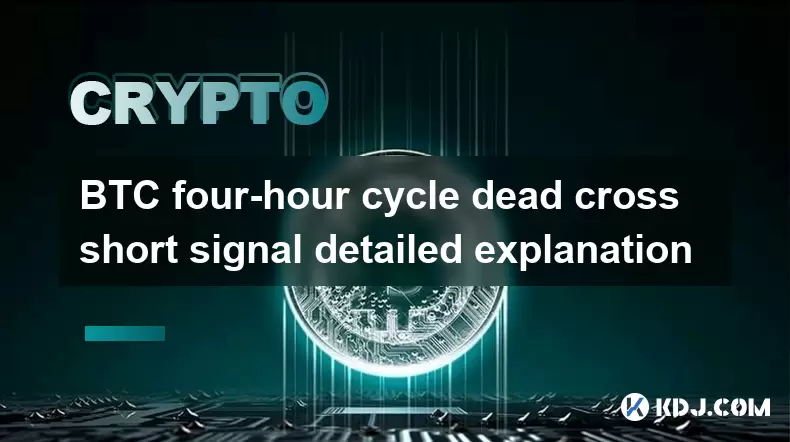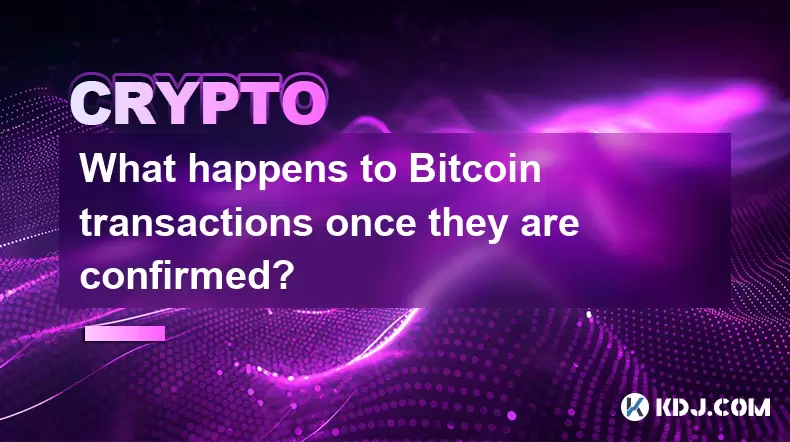-
 Bitcoin
Bitcoin $116400
-0.36% -
 Ethereum
Ethereum $4033
3.40% -
 XRP
XRP $3.302
-1.26% -
 Tether USDt
Tether USDt $1.000
-0.02% -
 BNB
BNB $796.1
1.67% -
 Solana
Solana $177.8
1.89% -
 USDC
USDC $0.9999
0.00% -
 Dogecoin
Dogecoin $0.2314
4.09% -
 TRON
TRON $0.3381
0.14% -
 Cardano
Cardano $0.7989
1.22% -
 Stellar
Stellar $0.4496
-1.84% -
 Chainlink
Chainlink $20.42
9.42% -
 Hyperliquid
Hyperliquid $41.17
0.88% -
 Sui
Sui $3.914
3.77% -
 Bitcoin Cash
Bitcoin Cash $584.7
1.52% -
 Hedera
Hedera $0.2632
-0.54% -
 Avalanche
Avalanche $24.09
3.40% -
 Ethena USDe
Ethena USDe $1.001
-0.02% -
 Litecoin
Litecoin $123.2
1.33% -
 Toncoin
Toncoin $3.318
-0.04% -
 UNUS SED LEO
UNUS SED LEO $8.984
-0.05% -
 Shiba Inu
Shiba Inu $0.00001323
2.85% -
 Uniswap
Uniswap $10.90
4.41% -
 Polkadot
Polkadot $3.999
3.34% -
 Dai
Dai $1.000
0.01% -
 Cronos
Cronos $0.1630
9.64% -
 Bitget Token
Bitget Token $4.484
0.82% -
 Monero
Monero $272.4
2.44% -
 Pepe
Pepe $0.00001173
6.03% -
 Aave
Aave $290.8
2.88%
BTC four-hour cycle dead cross short signal detailed explanation
The BTC four-hour cycle dead cross is a key bearish signal that traders use to identify short-selling opportunities, but it should be confirmed with other indicators.
Jun 02, 2025 at 10:35 am

The concept of the four-hour cycle dead cross in the context of Bitcoin (BTC) trading is a significant technical indicator that traders often use to identify potential short-selling opportunities. A dead cross, also known as a death cross, occurs when a short-term moving average crosses below a long-term moving average, signaling a potential bearish trend. In this article, we will delve into the specifics of the BTC four-hour cycle dead cross and explore how it can be used as a short signal.
Understanding the Four-Hour Cycle
The four-hour cycle refers to the time frame used for analyzing Bitcoin's price movements. This cycle is popular among traders because it provides a balance between short-term fluctuations and longer-term trends. By focusing on the four-hour chart, traders can identify patterns and signals that might not be as visible on shorter or longer time frames.
What is a Dead Cross?
A dead cross is a bearish signal in technical analysis that occurs when a shorter-term moving average (such as the 50-day moving average) crosses below a longer-term moving average (such as the 200-day moving average). In the context of the four-hour cycle, the dead cross is typically observed when the 50-period moving average crosses below the 200-period moving average on the four-hour chart.
Identifying a Dead Cross on the Four-Hour Chart
To identify a dead cross on the four-hour chart, traders need to follow these steps:
- Open your trading platform: Ensure that you are using a platform that supports technical analysis, such as TradingView or MetaTrader.
- Select the four-hour time frame: Switch your chart to the four-hour time frame to focus on this specific cycle.
- Add moving averages: Add two moving averages to your chart: the 50-period moving average and the 200-period moving average.
- Monitor the crossover: Watch for the 50-period moving average to cross below the 200-period moving average. This crossover indicates a dead cross.
Using the Dead Cross as a Short Signal
When a dead cross occurs on the four-hour chart, it can be used as a signal to initiate a short position. Here’s how traders can use this signal effectively:
- Confirm the signal: Before entering a short position, it’s essential to confirm the dead cross signal with other technical indicators, such as the Relative Strength Index (RSI) or the Moving Average Convergence Divergence (MACD).
- Set entry and exit points: Determine your entry point for the short trade, which would be after the dead cross is confirmed. Set a stop-loss order above the recent high to manage risk. Also, set a take-profit level based on your analysis of potential support levels.
- Monitor the trade: Keep an eye on the trade and be ready to adjust your stop-loss and take-profit levels as the market moves.
Examples of Dead Crosses in BTC
To illustrate how a dead cross can be used as a short signal, let’s look at a couple of examples from historical Bitcoin price data:
- Example 1: In early 2021, Bitcoin experienced a dead cross on the four-hour chart when the 50-period moving average crossed below the 200-period moving average. This signal was followed by a significant price drop, validating the dead cross as a short signal.
- Example 2: In mid-2022, another dead cross occurred on the four-hour chart, leading to a bearish trend that lasted for several weeks. Traders who entered short positions after the dead cross were able to profit from the subsequent price decline.
Risks and Considerations
While the dead cross can be a powerful signal, it’s important to consider the following risks and considerations:
- False signals: Not every dead cross will result in a sustained bearish trend. Sometimes, the market may reverse quickly, turning the dead cross into a false signal.
- Market volatility: Bitcoin is known for its high volatility, which can lead to rapid price movements that may invalidate a dead cross signal.
- Over-reliance on a single indicator: Relying solely on the dead cross without considering other technical indicators can lead to poor trading decisions. Always use multiple indicators to confirm signals.
Practical Tips for Trading the Dead Cross
To maximize the effectiveness of the dead cross as a short signal, consider the following practical tips:
- Use multiple time frames: In addition to the four-hour chart, analyze the daily and weekly charts to get a broader view of the market trend.
- Combine with other indicators: Use other technical indicators like the RSI, MACD, or Bollinger Bands to confirm the dead cross signal.
- Stay informed about market news: Keep an eye on news and events that could impact Bitcoin’s price, as these can influence the validity of technical signals.
Conclusion
The BTC four-hour cycle dead cross is a valuable tool for traders looking to identify potential short-selling opportunities. By understanding how to identify and use this signal effectively, traders can improve their chances of success in the volatile cryptocurrency market. However, it’s crucial to combine the dead cross with other technical indicators and stay informed about market conditions to mitigate risks.
Frequently Asked Questions
Q1: Can the dead cross be used for long-term trading?
A1: While the dead cross is typically used for short-term trading signals, it can also be applied to longer time frames such as daily or weekly charts. However, traders should adjust their strategies and risk management accordingly when using the dead cross for longer-term trades.
Q2: How reliable is the dead cross as a trading signal?
A2: The reliability of the dead cross can vary depending on market conditions and the specific asset being traded. While it can be a strong signal in some cases, it is not foolproof and should be used in conjunction with other technical indicators to increase its reliability.
Q3: What other indicators can be used to confirm a dead cross signal?
A3: Traders often use indicators such as the Relative Strength Index (RSI), the Moving Average Convergence Divergence (MACD), and Bollinger Bands to confirm a dead cross signal. These indicators can provide additional insights into market momentum and volatility.
Q4: Is it possible to automate trading based on the dead cross?
A4: Yes, it is possible to automate trading based on the dead cross using algorithmic trading platforms. Traders can set up rules to enter and exit trades automatically when a dead cross occurs, but they should still monitor these trades and adjust their strategies as needed.
Disclaimer:info@kdj.com
The information provided is not trading advice. kdj.com does not assume any responsibility for any investments made based on the information provided in this article. Cryptocurrencies are highly volatile and it is highly recommended that you invest with caution after thorough research!
If you believe that the content used on this website infringes your copyright, please contact us immediately (info@kdj.com) and we will delete it promptly.
- Decentralized Data: Taking the Driver's Seat in the Data Economy
- 2025-08-09 14:30:11
- Bitcoin vs. Gold: The Store-of-Value Showdown in the Digital Age
- 2025-08-09 14:30:11
- BlockDAG, Stellar, and Crypto Adoption: Navigating the Hype
- 2025-08-09 14:50:12
- Litecoin Price Surge: Riding the Wave of Institutional Interest and ETF Hopes
- 2025-08-09 14:50:12
- Chainlink's Wild Ride: Whales Are Still Loading Up on LINK!
- 2025-08-09 15:10:11
- Ruvi AI: Solana's New Challenger Dominating Token Sales with AI Innovation
- 2025-08-09 14:55:15
Related knowledge

Can the Bitcoin protocol be changed?
Aug 07,2025 at 01:16pm
Understanding the Bitcoin ProtocolThe Bitcoin protocol is the foundational set of rules that govern how the Bitcoin network operates. It defines every...

What happens to Bitcoin transactions once they are confirmed?
Aug 09,2025 at 05:22am
Understanding Bitcoin Transaction ConfirmationWhen a Bitcoin transaction is initiated, it is broadcast to the network and placed in a pool of unconfir...

How are Bitcoin transactions verified?
Aug 08,2025 at 06:57am
Understanding Bitcoin Transaction VerificationBitcoin transactions are verified through a decentralized network of nodes and miners that ensure the le...

How does decentralization make Bitcoin secure?
Aug 08,2025 at 09:35am
Understanding Decentralization in BitcoinDecentralization is a foundational principle of Bitcoin's architecture and plays a critical role in its secur...

What are some common misconceptions about Bitcoin?
Aug 07,2025 at 07:22pm
Bitcoin is Just Like Regular MoneyA widespread misconception is that Bitcoin functions identically to traditional fiat currencies like the US dollar o...

What is the role of nodes in the Bitcoin network?
Aug 08,2025 at 04:14pm
Understanding the Function of Nodes in the Bitcoin NetworkNodes are fundamental components of the Bitcoin network, serving as the backbone that ensure...

Can the Bitcoin protocol be changed?
Aug 07,2025 at 01:16pm
Understanding the Bitcoin ProtocolThe Bitcoin protocol is the foundational set of rules that govern how the Bitcoin network operates. It defines every...

What happens to Bitcoin transactions once they are confirmed?
Aug 09,2025 at 05:22am
Understanding Bitcoin Transaction ConfirmationWhen a Bitcoin transaction is initiated, it is broadcast to the network and placed in a pool of unconfir...

How are Bitcoin transactions verified?
Aug 08,2025 at 06:57am
Understanding Bitcoin Transaction VerificationBitcoin transactions are verified through a decentralized network of nodes and miners that ensure the le...

How does decentralization make Bitcoin secure?
Aug 08,2025 at 09:35am
Understanding Decentralization in BitcoinDecentralization is a foundational principle of Bitcoin's architecture and plays a critical role in its secur...

What are some common misconceptions about Bitcoin?
Aug 07,2025 at 07:22pm
Bitcoin is Just Like Regular MoneyA widespread misconception is that Bitcoin functions identically to traditional fiat currencies like the US dollar o...

What is the role of nodes in the Bitcoin network?
Aug 08,2025 at 04:14pm
Understanding the Function of Nodes in the Bitcoin NetworkNodes are fundamental components of the Bitcoin network, serving as the backbone that ensure...
See all articles

























































































